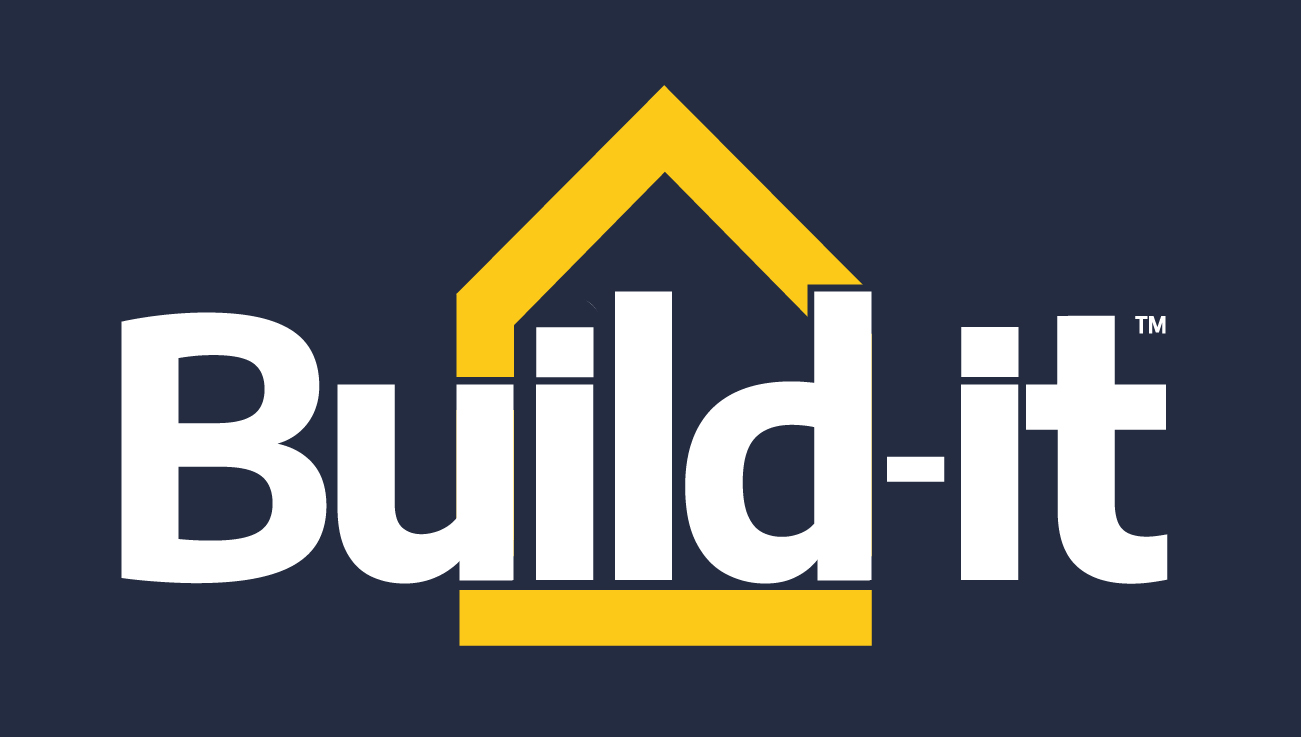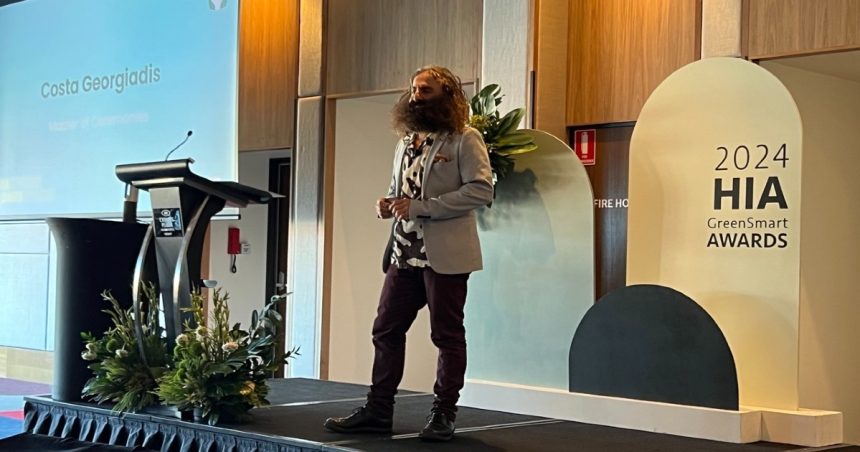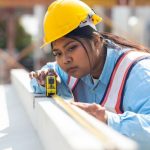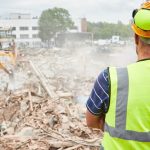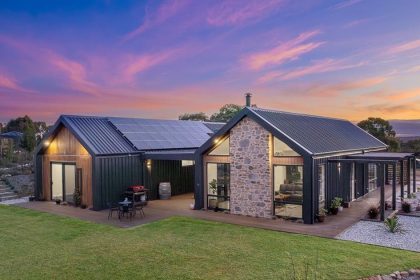Welcome from Hobart
Good Morning Build-it readers, today we are updating live from the HIA Future Homes Forum and Australian GreenSmart Awards,
A whose-who of industry decision-makers, sustainability leaders, construction innovators and Australia’s leading construction news platform, Build-it, have come together for a day of inspirational education and awards, discussing and celebrating the industry’s best of sustainable home construction.
What is the HIA Future Homes Forum
Hosted by Gardening Australia star and Logie award-winner Costa Georgiadis, organisers hope today will help drive a more sustainable, energy-efficient future for the Aussie home-building industry with a range of eco-friendly topics discussed at length.

Tasmania Premier opens the conference
In his welcoming address, Tasmania State Premier Jeremy Rockliff says the state of Tasmania is upping the pace of home construction by reducing red tape and relying on new time-saving technology.
“Planning is the key to getting the housing stock we need to deliver,” he said.
“It’s all about making it easier to get planning and building approvals to ensure construction starts faster.”
This week, Tasmania introduced electronic conveyancing –transforming property transactions by streamlining the settlement process.
The premier said Tasmania is Australia’s sustainability hub, with the state’s home-building sector able to rely on its renewable energy assets to ensure new homes in the region are constructed from green energy sources.
“We are one of the few places on earth that is 100 per cent self-efficient in renewable energy,” he said.
“We are the first jurisdiction to achieve net zero emissions, and we have maintained that status for nine years.”

1.2 million homes over the next five years – can it be delivered?
HIA Chief Executive Simon Croft has now joined the stage to discuss whether the nation’s target of building 1.2 million new homes by the end of the decade is achievable or a pipe dream.
Mr Croft says new home construction forecasts are falling 200,000 short of the government’s targets.
“To meet the goal, Australia would need to be building 657 homes per day every day,” Mr Croft said.

To achieve the optimistic goal, New South Wales alone would have to build 75,288 homes annually.
Current targets project the state to fall short of 114,000 homes.
“Are we on track at the moment? We probably have a shortfall of 188,000 homes (nationally),” Mr Croft said.
“That presents real challenges, but it also presents real opportunities.” Mr Croft said.
Mr Croft says policy agendas were one of the reasons Australia’s home builds were so behind pace, saying building regulations were now the most complex he had seen in his 20 years in the field.
“Everyone of these policies adds more uncertainty and regulation overload,” he said.
Mr Croft says the government’s focus on overall housing supply policy was often overtaken by social and emergency housing policies, which, while important, was having a counterproductive long-term effect by neglecting the main areas of property supply.
He believes the answer is to make it easier for construction companies to build so-called “missing middle” housing types such as low-rise apartments, townhouses and duplexes – which are currently the most expensive to construct per capita.
Mr Croft says neither prefab homes, 3D-printed homes, tiny homes, robotic construction methods, nor AI would provide a solution to the housing crisis alone, but each could play a role in boosting home build numbers and the speed of construction.
How the government can help?
HIA Chief Executive Simon Croft unveiled a list of HIA recommendations for how the government could help bring new home construction up to speed:
Top 10 ways the government can help address the housing shortage:
- More homes of all types
- Not focus on one type of housing, such as social housing.
- More Greenfield, Brownfield, and infill housing
- Incentive states and territories to unlock planning and zoning reform
- Modernise housing data and collection to inform decision-making.
- Funding to enable infrastructure
- Remove unnecessary red tape to drive down costs
- Maintain taxation settings for housing investment for stability and reliability
- Increase Home Guarantee Schemes to support first-home buyers
- Pause new regulations that would increase costs and require regulatory offsets
- Get more people into trades.
- Training and funding the next generation of skilled trades workers
- Improve labour mobility by boosting skilled migrant numbers
- Investing in new approaches to homebuilding and scaling new tech
- Let businesses build homes without fear of constant regulatory changes
What is the NCC 2025 proposed changes?
HIA Building Policy Executive Director Shane Keating has now taken the stage to discuss the 2025 NCC changes set to impact the home building industry.
The next edition of the National Construction Code (NCC 2025) proposes amendments to the NCC requirements for energy efficiency of commercial buildings, waterproofing of balconies, car parks, storage and warehouses and condensation management.

Focus on Energy Efficiency
The most significant changes focus on energy efficiency for commercial buildings. The NCC 2025 draft aims to make new commercial buildings net-zero-ready, allowing for full electrification. These measures include:
- Stricter thermal performance requirements
- Mandatory on-site energy generation (e.g., solar panels)
- Provisions for easy transition from gas to electric appliances
These changes are expected to benefit the economy and align with Australia’s climate goals.
Preventing Water Damage
The draft also tackles water leaks that commonly plague apartments. New requirements would mandate a slight slope on horizontal surfaces (e.g., balconies) to direct water away from the building. This minor change could prevent costly water damage in many new apartments.
Condensation Control
To control condensation as building airtightness improves, the draft includes climate zone-specific revisions. While these changes are modest, they aim to reduce mold growth and related health risks, particularly in cooler climates.
Improved Public Facilities for Women
The 2025 code update addresses two issues concerning bathroom facilities for women:
- Reduced Queuing: In single-auditorium entertainment venues, more toilets for women will be required, reducing long wait times.
- Menstrual Hygiene: All commercial buildings must provide facilities for dispensing sanitary items, improving public health and facility management.
Enhanced Carpark Fire Safety
The draft strengthens fire safety requirements for structured car parks, regardless of type (open-air or basement). Changes include:
- Increased fire resistance levels
- Mandatory sprinklers in car parks with 40+ vehicles and car stackers
These are driven by larger, more flammable vehicles and the increased use of car parks for non-vehicle purposes (e.g., bike storage and changing rooms).
Clearer Compliance Assessment
The NCC 2025 draft prohibits using “expert judgment” alone to assess performance solutions related to fire safety and structural integrity. This ensures compliance relies on clear methods, evidence, and documentation.
The Economics of Green Home Building
Matthew King, HIA Senior Economist, is now discussing the economics of green building.
Do homes sell for more if they have green features?
According to Domain’s 2024 sustainability property report, homebuyers are willing to pay up to 53 per cent more for sustainable houses than traditional properties in some suburbs across the country as energy-efficient features become a necessity.
“Domain concludes that consumers are willing to pay a premium of 14.5 per cent on a detached house of 11.3 per cent on a green unit,” Mr King said.
The greatest price premium can be seen in Melbourne, with a 28.8 per cent spike in the value of the average green home, a difference of over $241,000.
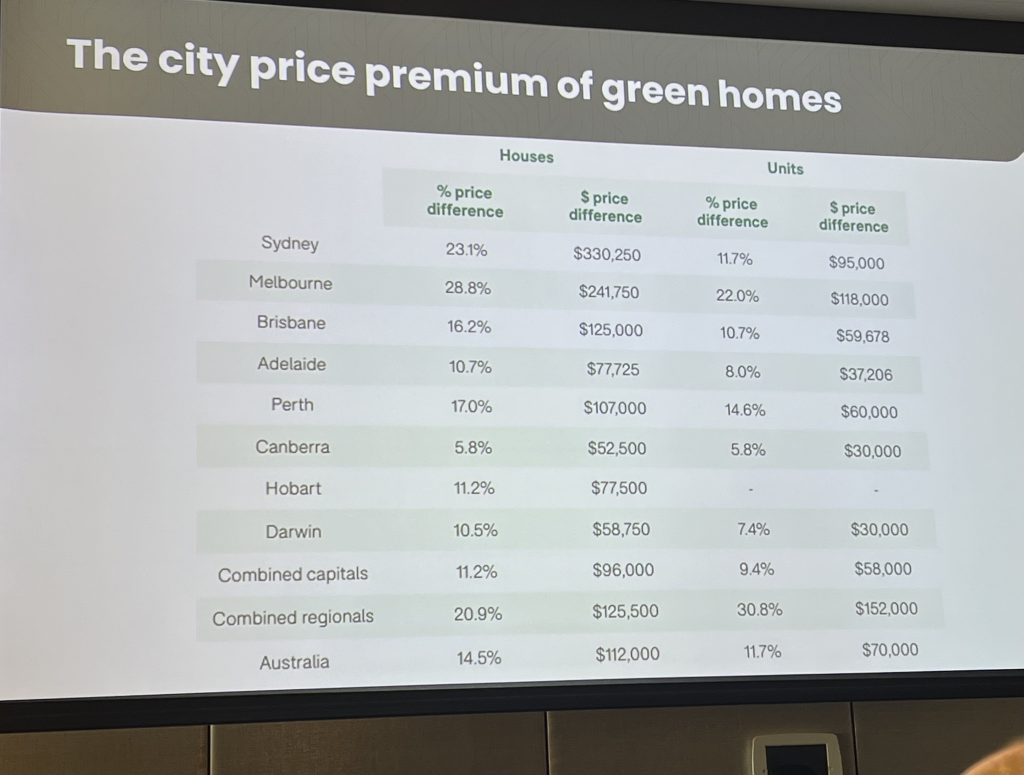
Gen X and Asset rich driving green home interest:
King says the idea that its just the asset rich who are demanding green homes was incorrect with data showing the younger generation are also seeking energy efficient homes, which also sell faster than a standard home by 4 per cent with a 17 per cent greater buyer interest.
Green home loans:
Financial institutions are offering lower interest rate loans for those looking to purchase a green energy efficient home or upgrade their home’s energy efficiency.
Generally, to qualify for a green home loan, your new or existing home may need to include specific features, such as:
- Solar panels
- Insulation
- Double glazing
- Solar hot water systems
- Water tanks
- Energy storage systems
Additionally, your home typically needs to achieve or exceed a seven-star NatHERS rating to be eligible for a green home loan.
Buildings and Climate Global Forum impacts on Australian housing industry
International Codes Council Oceania managing director Neil Savary is joining us now via video link to discuss how Global Building and Climate Forum changes and their impacts on the Australian home building and construction sector.
With the acceleration of climate change, buildings are predicted to be increasingly exposed to climate-related risks, particularly those affecting developing countries and cities.
Moreover, by 2050, 68 per cent of the world’s population will live in urban areas, and global demand for raw materials is expected to double by 2060.
At the Buildings and Climate Global Forum earlier this year, representatives from 70 countries signed a non-binding commitment to implement a swift transition within the building sector to achieve the commitments set out in the 2050 Paris Climate Accords.
The ministers committed to:
- Implementing roadmaps, regulatory frameworks, and mandatory building and energy codes to move towards carbon-neutral buildings;
- Implementing an appropriate financial framework with financial and fiscal incentives and regulatory tools to increase the share of resilient, near-zero emission, and affordable buildings;
- Promoting the adoption of labels, standards, and certifications;
- Leading by example by adopting ambitious policies regarding public procurement;
- Promoting the production, development, and use of low-carbon, durable, and cost-effective construction materials;
- Promoting collaborative value chains, as well as research and development of innovative solutions;
- Improving skills by strengthening local know-how, considering mitigation and adaptation strategies;
- Developing multi-level governance, coordination among different stakeholders, and a more participatory approach to ensure coordination of implementation;
- And developing tools and regulatory frameworks to collect and share data and best practices.
The role of AI in building and construction
The Executive Director at the UST Data Science Institute, Fang Chen, will now discuss the role of AI in Building and Construction.
Professor Fang Chen says construction is currently lagging behind other industries in the adoption of AI.
She says AI can assist the industry in design optimisation, prediction analytics, construction planning, scheduling, safety and risk management, and quality control.
AI for cost estimation and scheduling: AI can predict cost overruns based on factors such as project size, contract type and competence.
AI for risk mitigation: AI can monitor and prioritise risk on the job site and automatically assign priority to issues and construction managers working closely with their teams.
AI for project management automation: AI can make construction project management predictable by optimising the best path for projects and correcting itself over time if work is off track.
AI makes job sites more productive: AI-based self-driving construction machinery can perform repetitive tasks for more efficient work flows, this could include concrete pouring, bricklaying, welding and demolition tasks.
AI for safety: AI could be used to automatically identify safety issues through videos, images and other relevant data.
AI for structure health monitoring: AI-based damage identification tools can help monitor the structural safety of buildings, enable fixes, and develop maintenance schedules.
AI for labour shortage: AI can assist through robotics and advanced tools to help address the nation’s ongoing tradie shortage.
AI for off-site construction: AI can be used to drive autonomous robots for components and construction material manufacturing.
AI in construction recycling:
AI can monitor construction waste, identify and track particular types, predict which materials will be recycled, and sort and separate different types of waste.
AI and sustainable building maintenance:
AI can help in sustainable building maintenance by making it easier to predict problems ahead of time and automate checks.
2024 HIA Australian GreenSmart Awards announced:
ABC’s Gardening Australia and Logie award-winner Costa Georgiadis has returned to the stage to announce the winner of this year’s 2024 HIA Australian GreenSmart Awards.
HIA Australian GreenSmart Awards recognise those who build or design environmentally-friendly homes and provide solutions to make homes more efficient.
GreenSmart Professional Award
This award is presented to the GreenSmart Professional who best demonstrates the successful application of the GreenSmart approach in a residential building and design capacity within the industry.
Winner: Joe Mercieca – Blue Eco Homes
GeenSmart Sustainable Home Award
Presented to the home that demonstrates the best use of sustainable products:
Winner: Milwood Homes SA

GreenSmart Energy Efficiency Award
This award is presented to the housing project (single or multi dwelling) that uses minimal energy to serve current and future needs; both in the construction and operation of the home.
Winner: Ovens & King Builders

GreenSmart Multi Dwelling Development Award
This award recognises multiple dwelling residential projects. These projects typically include developments known as dual occupancy (two dwellings on a single allotment), villas (one storey), townhouses (two-three storey) and terrace housing, whether attached or detached, as well as residential apartment buildings of two or more storeys, not including car parking, and containing at least two self-contained dwellings.
Winner: Inka Builders

GreenSmart Display/ Project Home Award
An individual house currently on display to the public and intended for reproduction as displayed or with standard variations to suit the client’s needs. A project home is an individual house based on a display home or sales brochure for a repeatable design, which has been tailored to suit the needs of the client and the site. This includes manufactured homes formed of pre-built major elements and then assembled on site.
Winner: Arden Homes
GreenSmart Custom Built Home Award
An individual house, which has been uniquely designed and built on contract specifically for the site and according to the requirements and brief of a client. Where the home is built for staff, friends, a family member or is the builder’s own home, the contract price must represent the complete cost to build an identical home (including builders margins), which is the price offered to the home buying public
Winner: 360 Building Solutions and Light House Archiscience

GreenSmart Renovation/ Addition Project Award
An extension or renovation involving structural building work to an existing individual house or other residential building. To renovate and upgrade a group of apartments, villas, townhouses, etc or to convert a non-residential building into a residential building.
Winner: Sowden Building Solutions
GreenSmart Home of the year 2024 Award
This is the top gong in the national HIA sustainability awards.
Finalists are the winners of the previous three categories: Arden Homes, 360 Building Solutions and Lighthouse Archiscience and Sowden Building Solutions.
Winner: 360 Building Solutions and Lighthouse Archiscience.

